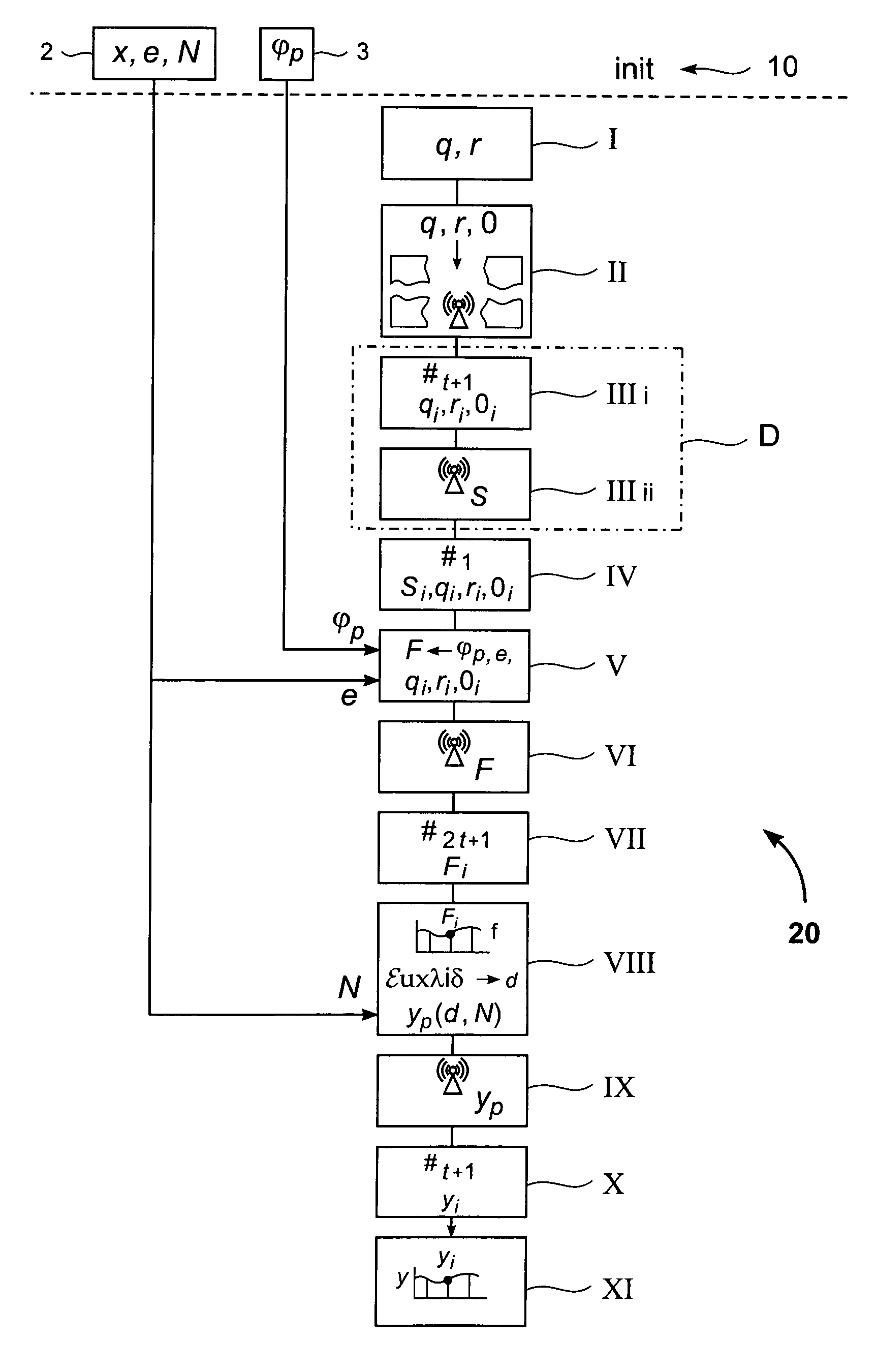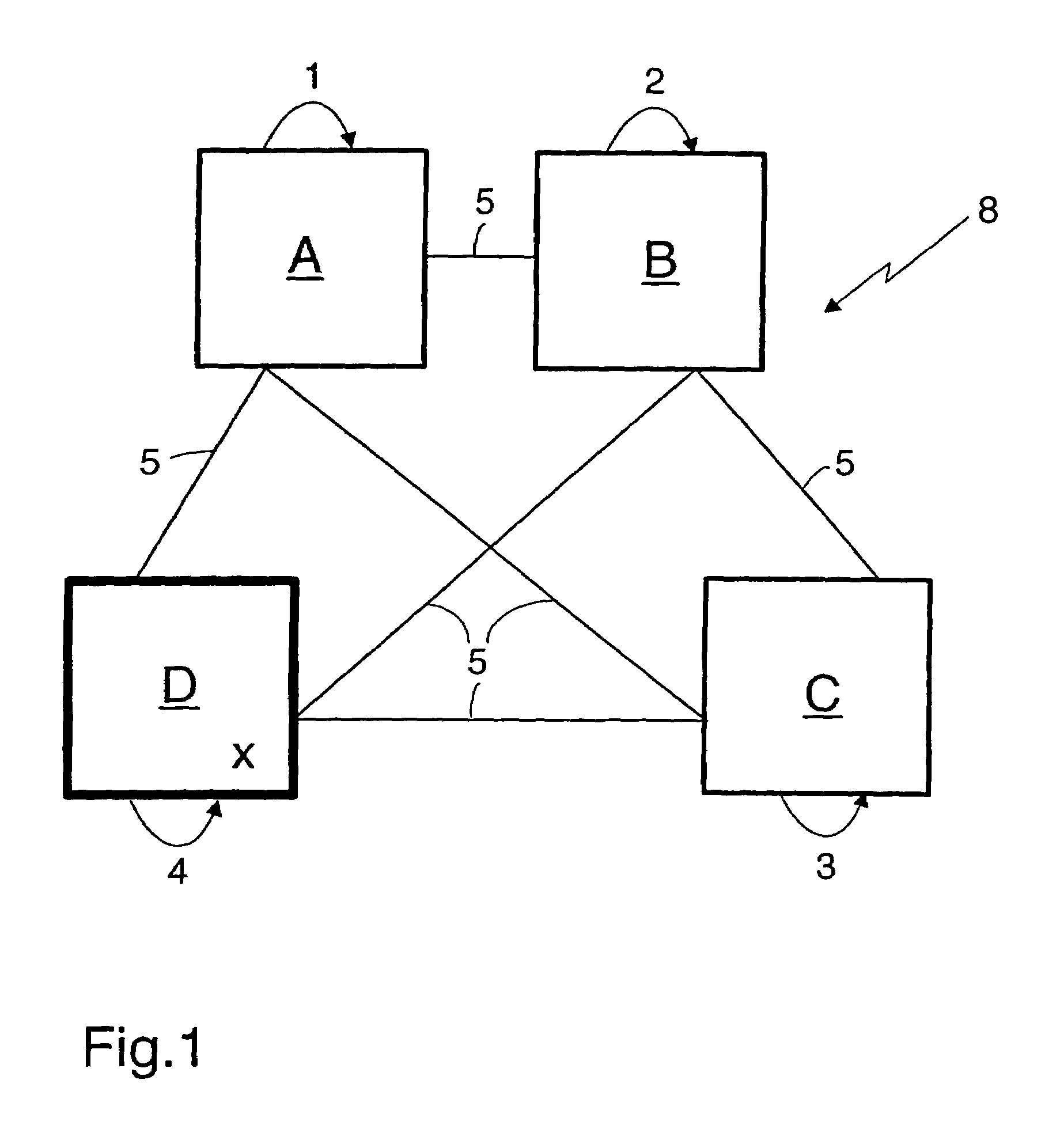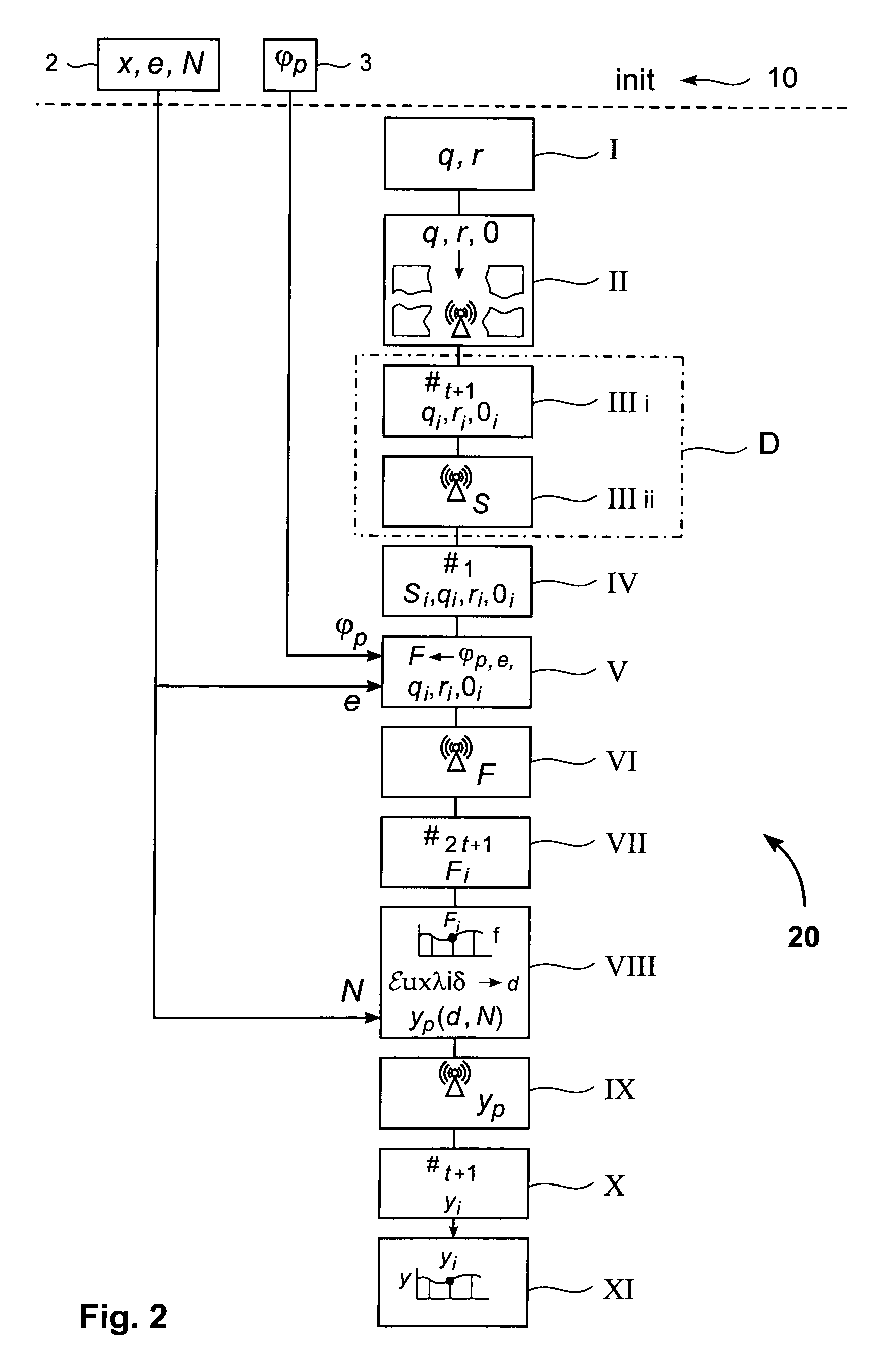Method for distributed computation of RSA inverses in asynchronous networks
- Summary
- Abstract
- Description
- Claims
- Application Information
AI Technical Summary
Benefits of technology
Problems solved by technology
Method used
Image
Examples
Embodiment Construction
[0036]FIG. 1 shows an example of a common computer system 8, where a distributed computation of an RSA inverse value y can be performed. It consists of n=4 participating network devices A, B, C, and D which are connected via communication lines 5 to an asynchronous network. The system comprises here a dealer device D, which is designated by the “X”. In a further embodiment, t+1 participating network devices may act as a leader device, as described in more detail below. Each participating network device A, B, C, D may be any type of computer device known in the art from a computer on a chip or a wearable computer to a large computer system. The communication lines can be any communication means commonly known to transmit data or messages from one participating network device A, B, C, D to another. For instance, the communication lines may be either single, bi-directional communication lines 5 between each pair of participating network devices A, B, C, D or one unidirectional line in ...
PUM
 Login to View More
Login to View More Abstract
Description
Claims
Application Information
 Login to View More
Login to View More - R&D
- Intellectual Property
- Life Sciences
- Materials
- Tech Scout
- Unparalleled Data Quality
- Higher Quality Content
- 60% Fewer Hallucinations
Browse by: Latest US Patents, China's latest patents, Technical Efficacy Thesaurus, Application Domain, Technology Topic, Popular Technical Reports.
© 2025 PatSnap. All rights reserved.Legal|Privacy policy|Modern Slavery Act Transparency Statement|Sitemap|About US| Contact US: help@patsnap.com



